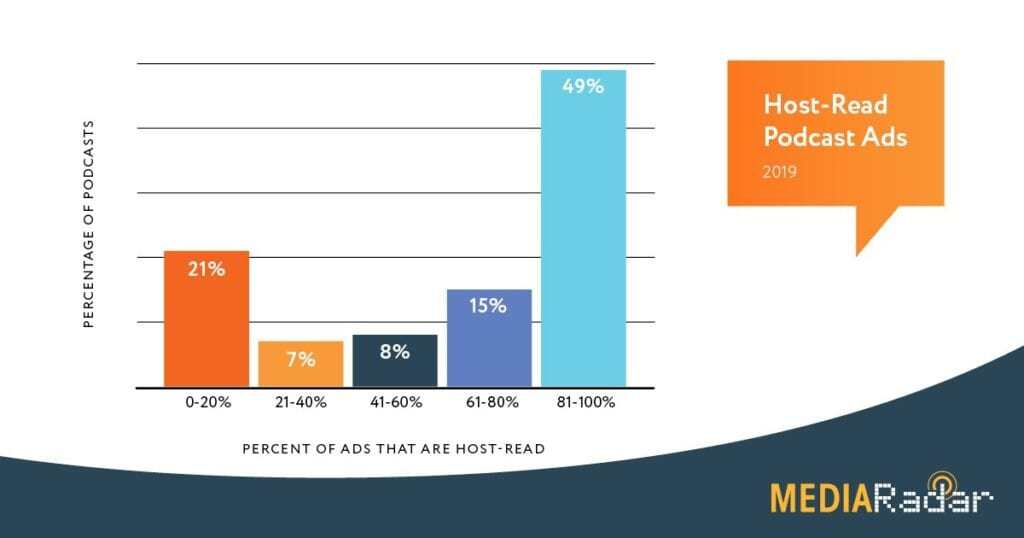The popularity of podcast advertising is exploding.
In 2015, advertisers spent just $105mm on podcast ads. In 2021, podcast advertising revenue surpassed $1b.
We can attribute much of that growth to the nature of podcast ads—they’re read by the hosts (at least most of them).
Listeners feel a personal connection or affinity toward podcast hosts. They can even keep them in line if they endorse something that rubs them the wrong way.
It’s this sense of authenticity and relevance that makes host-read podcast ads so powerful.

How Do Host-Read Podcast Ads Stack Up?
It was a natural transition for advertisers to take live-read spots on radio and apply the approach to podcasts that align with their target audience. That’s why most podcast ads are host-read; 63% of podcasts are host read. Meanwhile, almost half of podcasts had the majority (at least 8 out of 10) of their ads read by the host.

Conversely, the other most common bucket was having less than 20 percent of the ads read by the host.
This polarization shows that many podcasts adopt a strategy of the host reading the ads or not, with very few operating in the middle. Advertisers like what they like, and podcasts are giving them just that. Podcast advertising revenue will continue to rise because of it.
Making the medium even more attractive to advertisers is the fact that host-read ads are longer than non-host-read ads; the average host-read ad lasts 48 seconds, while standard, pre-recorded ads average just 27 seconds.
In other words, host-read podcast ads lend both authenticity and extra real estate for advertisers. This may be, in part, why advertisers that have their ads read by the podcast host are 3% more likely to renew their ad buys after the initial placement—and why these ads are here to stay.
Some of the biggest brands in the world are actively gobbling up podcast ad inventory. According to our research, the following ten companies accounted for 15.9% of the overall 2021 spending on podcast ads.
Top podcast advertisers in 2021
- Teladoc Health (BetterHelp)
- Berkshire Hathaway (GEICO)
- Capital One
- ZipRecruiter
- SimpliSafe
- Comcast
- Amazon
- Squarespace
- Coors
- Progressive
The pressing question: How do they stack up compared to non-host-read-ads?
A study from Nielsen found that host-read podcast ads were “significantly more likely to be described by respondents as authentic and believable, and less likely to be felt as forced.”
Yeah, they’re popular for a reason—and they’re not going anywhere. That said, programmatic podcast advertising will give host-read ads a run for their money as marketers wrap their heads around the former.
According to recent research from Acast, the world’s largest independent podcast company, only 42% of marketers said they have a “detailed understanding of programmatic advertising,” despite nearly 60% having bought other programmatic ads before.
Despite the confusion, respondents also said they expect the share of programmatic podcast ads to nearly triple by 2027.
Host-Read Post Ads: A Straight Line to Niche Audiences
The number of podcasts is growing quickly, and people are taking notice. In 2006, only 22% of people in the U.S. knew of podcasting. Last year, that number climbed to 78%.
Advertisers are understandably noticing, with total podcast ad spending expected to hit $2.25b this year and $3.53b in 2026.
Given the proven prowess of host-read ads, it seems like a foregone conclusion that the format will remain popular throughout that time as advertisers across industry lines look to create authentic connections with consumers.
For more insights, sign up for MediaRadar’s blog here.



